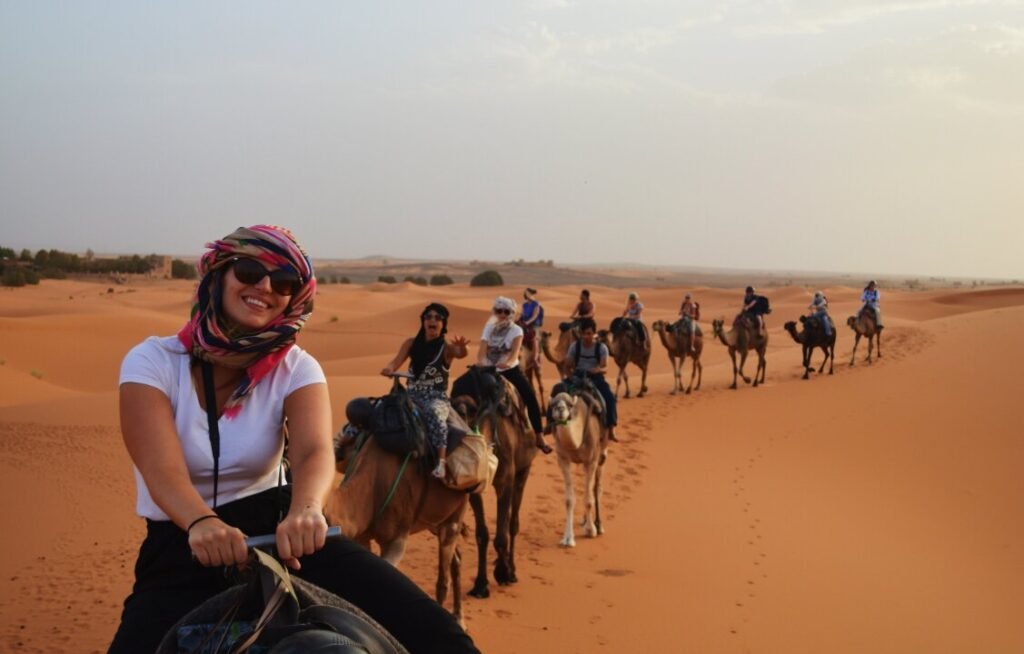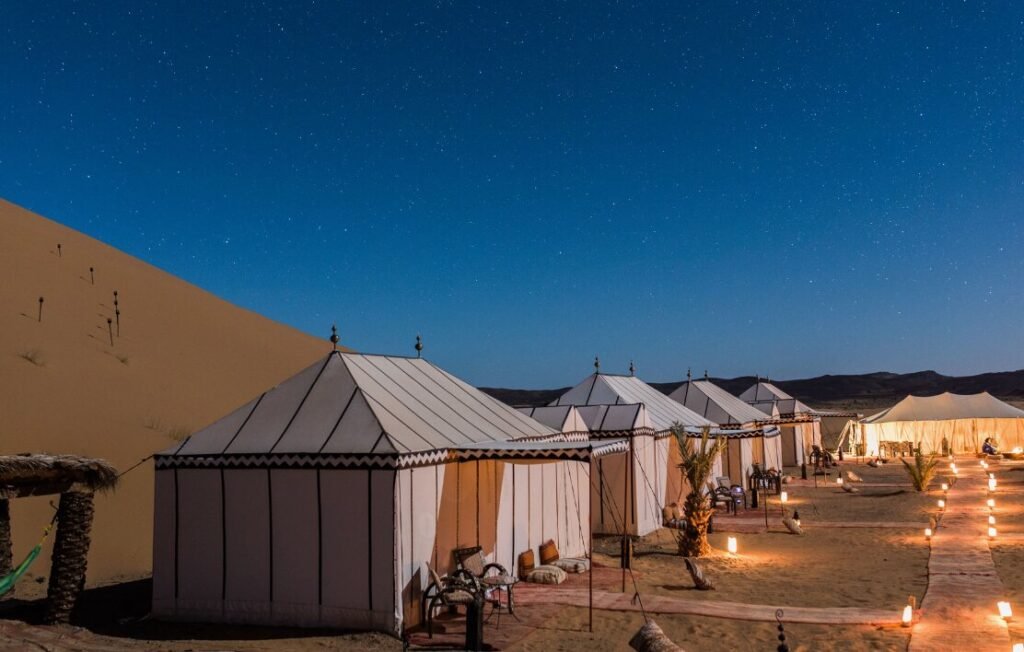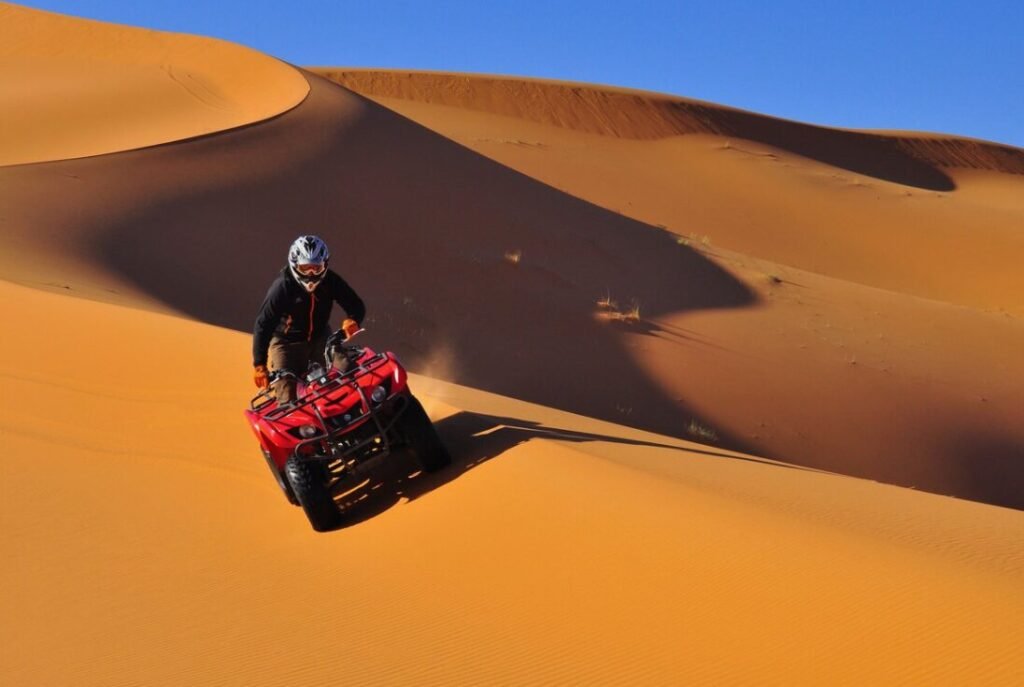Introduction
The Moroccan Sahara is a mesmerizing destination that offers a unique blend of natural beauty, cultural richness, and adventurous experiences. From its vast stretches of golden sand dunes to its charming nomadic communities, the Sahara provides an unforgettable journey for travelers. In this article, we will explore ten essential things you need to know about the Moroccan Sahara, including its stunning landscapes, captivating traditions, and the best ways to experience it. So, let’s dive into the wonders of this remarkable desert region.
1. The Sahara: A Desert of Wonders
The Moroccan Sahara is part of the larger Sahara Desert, which spans across several countries in North Africa. It is the world’s largest hot desert, covering an area of over 9.4 million square kilometers. The desert’s vastness and diverse landscapes make it a haven for adventure seekers and nature enthusiasts alike.

2. The Gateway to the Sahara: Marrakech
To embark on your journey into the Moroccan Sahara, Marrakech serves as the perfect starting point. This vibrant city is known for its bustling souks, breathtaking architecture, and vibrant culture. It is also a hub for tourist transport in marrakech, including options for reaching the Sahara.
3. Tourist Transport in Marrakech: Getting to the Sahara
When it comes to traveling from Marrakech to the Sahara, there are several options available. One popular choice is to take a guided tour, which includes transportation, accommodation, and a chance to experience the desert’s wonders with expert guidance. Another option is to rent a car and drive yourself, allowing for more flexibility in your itinerary. Alternatively, you can opt for public transportation, such as buses or shared taxis, which are more budget-friendly but may have limited schedules.
4. The Best Time to Visit the Sahara
The Moroccan Sahara experiences extreme temperatures, with scorching heat during the day and chilly nights. The best time to visit is during the cooler months, from October to April, when temperatures are more bearable. This period also coincides with the annual nomadic festivals and offers a chance to witness traditional music, dance, and camel races.
5. The Erg Chebbi Dunes: Majestic Sandscape

Located near the town of Merzouga, the Erg Chebbi dunes are the crown jewel of the Moroccan Sahara. These towering sand dunes, reaching up to 150 meters in height, create a surreal landscape that seems straight out of a fairytale. Watching the sunrise or sunset over the dunes is an awe-inspiring experience that shouldn’t be missed.
6. Nomadic Culture: The Bedouins of the Sahara
The Moroccan Sahara is home to nomadic communities, such as the Bedouins, who have inhabited the desert for centuries. Their rich cultural heritage revolves around camel herding, traditional music, and intricate handicrafts. Engaging with the local communities and learning about their way of life is a fascinating aspect of Sahara exploration.
7. Camping in the Sahara: A Night under the Stars

Spending a night in a desert camp is an essential part of the Sahara experience. Many desert camps offer comfortable accommodations, ranging from traditional nomadic tents to luxurious glamping options. Imagine gazing at the starry night sky, listening to the silence of the desert, and enjoying traditional Moroccan cuisine around a campfire.
8. Sahara Wildlife: Surprising Biodiversity
Contrary to popular belief, the Sahara is not devoid of life. It is home to a surprising array of wildlife, adapted to the harsh desert conditions. From desert foxes and gazelles to reptiles like the fringe-toed lizard, the Sahara’s ecosystem is a testament to nature’s resilience.
9. Adventure Activities in the Sahara
For thrill-seekers, the Moroccan Sahara offers a wide range of adventure activities. From exhilarating dune bashing and quad biking to camel trekking and sandboarding, there’s an adventure for everyone. These activities allow you to immerse yourself in the vastness of the desert and create unforgettable memories.
10. Respecting the Sahara: Sustainable Tourism

As visitors, it’s crucial to respect the fragile ecosystem of the Sahara and the local communities that call it home. Practice responsible tourism by following designated trails, disposing of waste properly, and supporting local initiatives that aim to preserve the desert’s natural beauty and cultural heritage.
Conclusion
The Moroccan Sahara is a destination that captures the imagination and offers a truly unique travel experience. From the awe-inspiring landscapes to the rich cultural traditions, exploring the Sahara is an adventure like no other. Whether you choose to take a guided tour or venture on your own, the memories you create in the Moroccan Sahara will stay with you forever.

FAQs (Frequently Asked Questions)
1. How long does it take to reach the Moroccan Sahara from Marrakech?
The travel time from Marrakech to the Sahara depends on the chosen mode of transport. By car, it takes approximately 8-10 hours, while guided tours usually include overnight stays and take around 2-3 days.
2. Can I visit the Sahara on my own, without a guided tour?
Yes, it is possible to visit the Sahara without a guided tour. Renting a car and driving yourself is a popular option for those seeking more flexibility in their itinerary.
3. Are there any safety precautions to consider while visiting the Sahara?
While the Sahara is generally safe for visitors, it’s essential to take precautions such as carrying plenty of water, protecting yourself from the sun, and informing someone about your travel plans.
4. Are there any wildlife encounters in the Sahara?
The Sahara is home to several species of wildlife, including desert foxes, gazelles, and reptiles. However, wildlife sightings are not guaranteed, and it’s important to respect their natural habitat.
5. Can I experience a desert camp without spending the night?
Yes, many desert camps offer day visits for those who don’t wish to spend the night. These visits often include camel rides, traditional meals, and the opportunity to explore the dunes.




